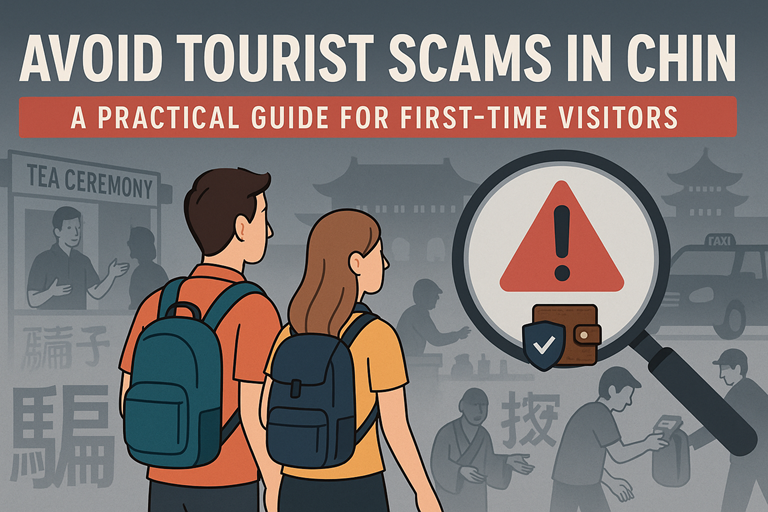Riding China’s High-Speed Rail
I. Introduction to China’s High-Speed Rail (HSR)
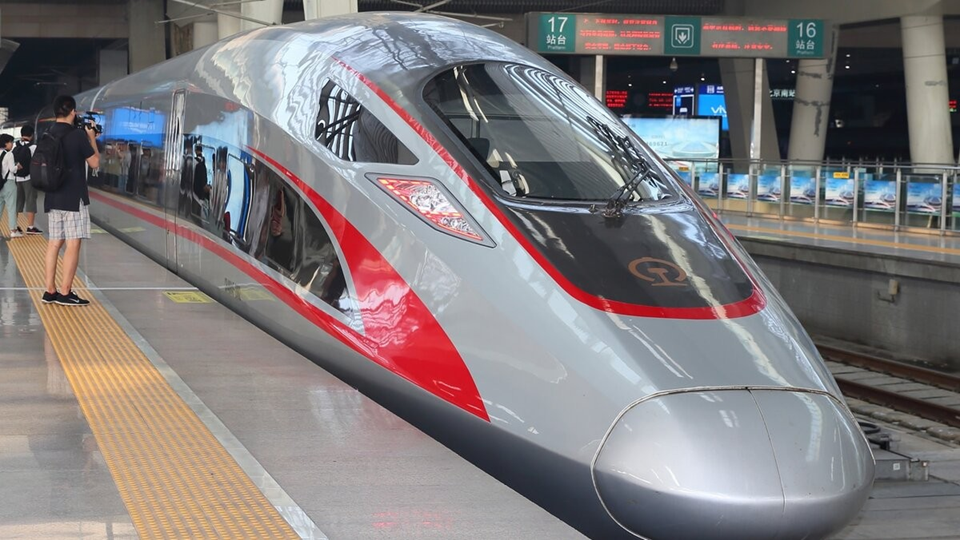
China’s HSR network, known as “高铁” (Gāotiě), is the world’s largest and most advanced, with over 45,000 kilometers (about 28,000 miles) of dedicated lines crisscrossing the nation. These sleek “bullet trains” connect virtually all major cities and a rapidly growing number of smaller ones, making HSR the preferred mode of domestic travel for many, thanks to its speed, comfort, and punctuality.
China’s HSR Network Consists of:
- G-trains (高铁 – Gāotiě): The fastest category, operating at speeds of 300-350 km/h (186-217 mph) on dedicated high-speed lines.
- D-trains (动车 – Dòngchē): Also known as “bullet trains,” D-trains run at speeds of 200-250 km/h (124-155 mph).
- C-trains (城际 – Chéngjì): Intercity trains connecting major cities with nearby metropolitan areas or satellite towns.
This guide focuses on these modern HSR services, which have revolutionized travel within China.
II. Understanding HSR Tickets
Your HSR ticket is your passport to this efficient system. Here’s what you need to know:
Seat Classes & Types
- Business Class (商务座 – Shāngwù Zuò): The pinnacle of HSR luxury with lie-flat seats and premium services.
- First Class (一等座 – Yīděng Zuò): Wider, more comfortable reclining seats in a 2+2 configuration.
- Second Class (二等座 – Èrděng Zuò): The most common and economical option with 3+2 seating.
Other Options
- Premium/VIP Seats: More comfort than standard First Class.
- Standing Tickets (无座 – Wú Zuò): When seats are sold out.
- Sleeper HSR Trains: For overnight journeys with soft or deluxe sleeper options.
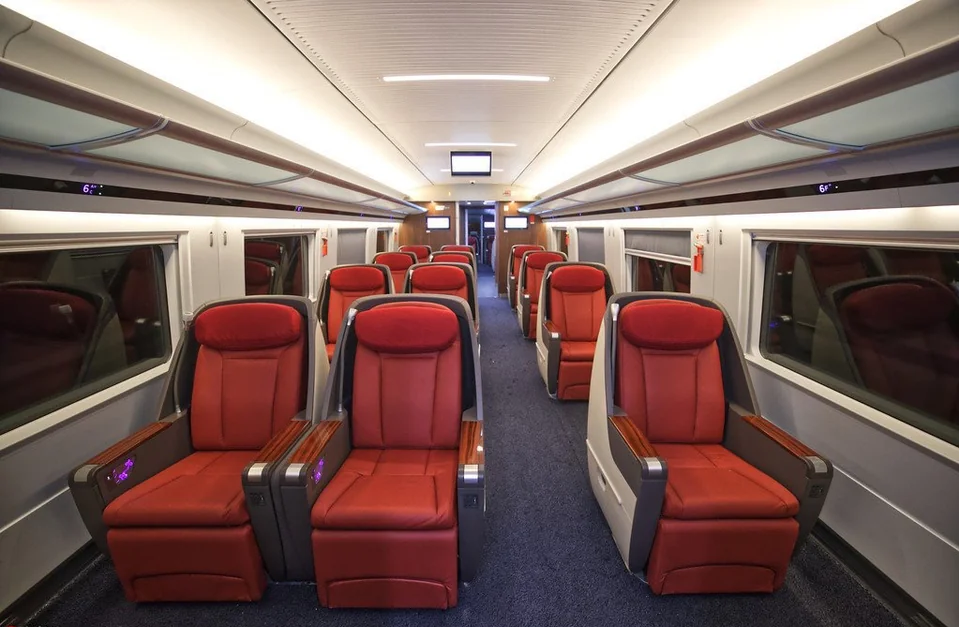
Information on Your Ticket:
Chinese train tickets contain crucial information including:
- Train Number (车次 – Chēcì)
- Departure & Arrival Stations
- Date & Time
- Carriage and Seat Number
- Seat Class
- Passenger Name and Passport Number
- Ticket Price
- QR code for scanning at gates
III. Booking HSR Tickets (Purchasing Guide)
Booking in advance is highly recommended, especially for popular routes and during peak travel periods.
When to Book:
- Standard Pre-sale Period: Typically 15 days prior to departure
- Peak Seasons: Chinese New Year, National Day Golden Week, Labor Day Holiday, Summer Holidays
- Off-Peak Seasons: Few days to a week in advance might be sufficient
Where & How to Book:
Online (Recommended for International Travelers)
Trip.com (Ctrip’s International Site): The most user-friendly platform for foreigners with English support and international payment options.
Official China Railway Website (www.12306.cn): Has an English version and supports foreign passports, but can be less intuitive.
Other Options
At the Train Station: Go to ticket windows with your passport and travel details in Chinese.
Via Hotels/Local Travel Agencies: Convenient but may charge commission.
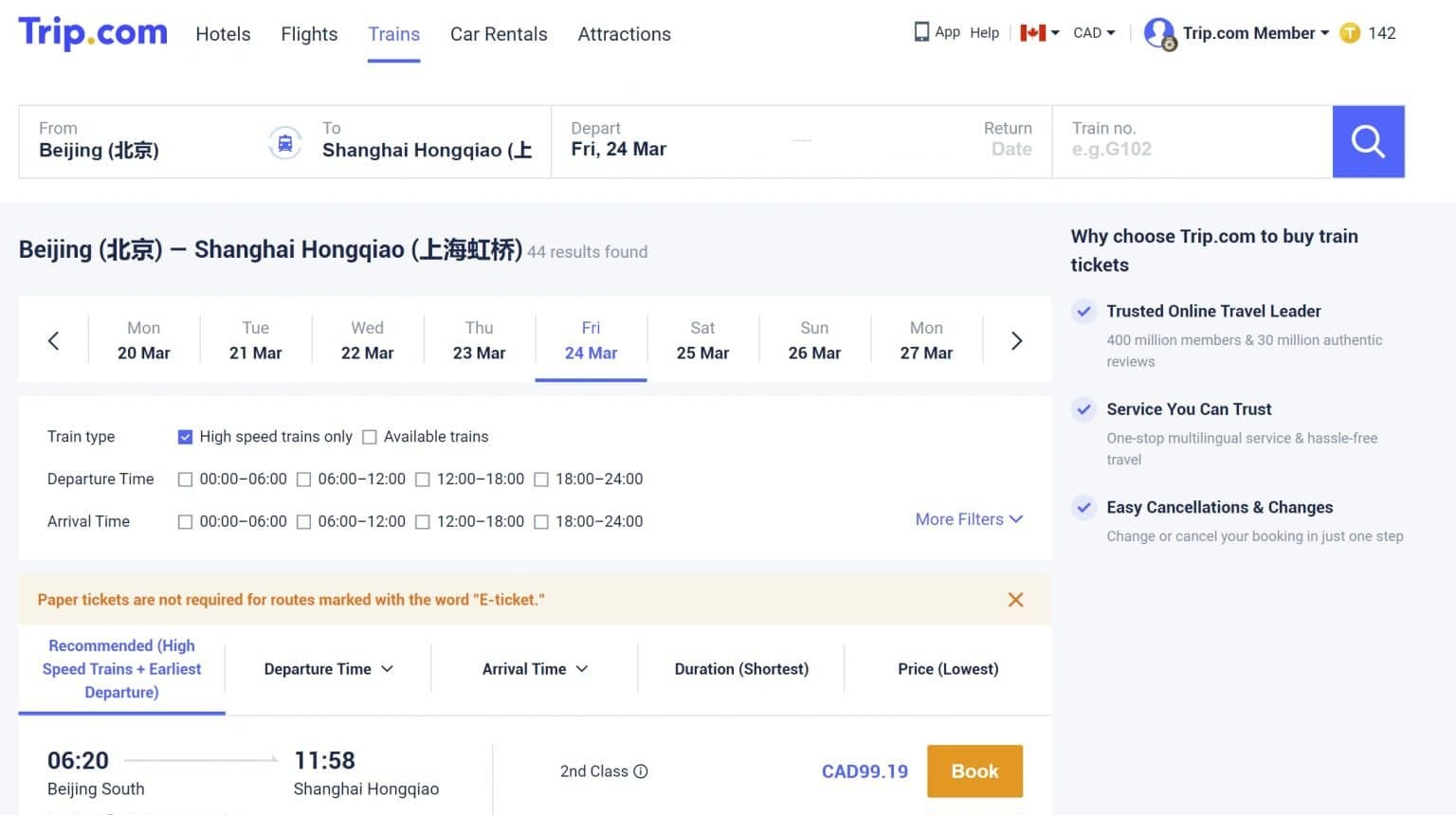
Required Information for Booking:
For each passenger, you will need:
- Full Name (exactly as on passport)
- Passport Number
- Nationality
- Date of Birth
- Contact information
Receiving Your Tickets:
E-tickets (Electronic Tickets / QR Codes)
Now the standard for most HSR routes. You can enter by scanning your original passport or using the QR code.
Collecting Paper Tickets
May still be required for some routes. Collect at any train station with your original passport and booking number.
IV. The Boarding Process (Step-by-Step)
Navigating China’s modern, often massive, HSR stations is generally straightforward if you know the process.
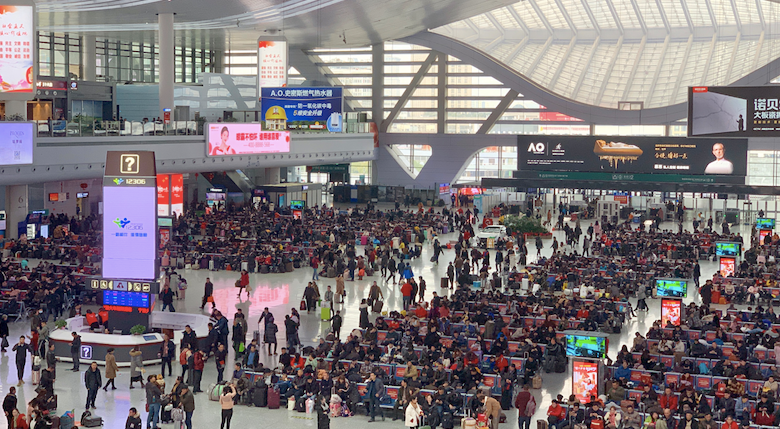
Arriving at the Station:
- When to Arrive: At least 60-90 minutes before departure (more if collecting paper tickets or during peak periods)
- Identifying Your Station: Major cities often have multiple stations (e.g., Beijing South, Shanghai Hongqiao)
Security Check (安检 – Ānjiǎn)
All passengers and luggage must pass through airport-style security:
- Place luggage on X-ray conveyor belt
- Walk through metal detector
- Prohibited items similar to airports (weapons, flammables, etc.)
- No strict liquid restrictions like air travel
Waiting Hall & Finding Your Gate
After security, locate the departure boards showing:
- Train Number (车次)
- Destination (终点站)
- Departure Time (开车时间)
- Platform (站台)
- Gate Number (检票口)
- Boarding Status (状态)
Boarding the Train (上车 – Shàngchē)

- Boarding Time: Typically begins 15-30 minutes before departure
- Lining Up: Proceed to your designated Gate Number (检票口)
- Ticket Check:
- E-ticket/passport: Scan passport at automated gates
- QR Code: Scan from your phone
- Paper Ticket: Insert into automated gate
- Proceeding to Platform: Follow signs to correct platform number
- Finding Your Carriage & Seat:
- Platform markings show carriage stopping positions
- Carriage numbers displayed on train exterior
- Seat numbers above seats or on wall panels
V. Luggage on HSR
Managing luggage on HSR is generally much easier than on airplanes.
Allowance & Restrictions
- No Formal Check-in: You carry your own luggage
- Official Guidelines: 20kg (44 lbs) per adult, dimensions under 130cm (51 inches)
- In Practice: Rarely strictly enforced for reasonable tourist luggage
- Prohibited Items: Same as security check restrictions
Storing Luggage on the Train
- Overhead Racks (行李架): For carry-on sized bags
- Dedicated Luggage Racks (大件行李存放处): At carriage ends for larger suitcases
- Space Behind Last Row: Some carriages have extra space
- Under Your Seat: For smaller bags
Luggage Tips
- Keep valuables with you at your seat
- Board early to secure good luggage space
- Label your luggage with contact information
- Don’t block aisles or inconvenience others
- Be prepared to lift your own luggage
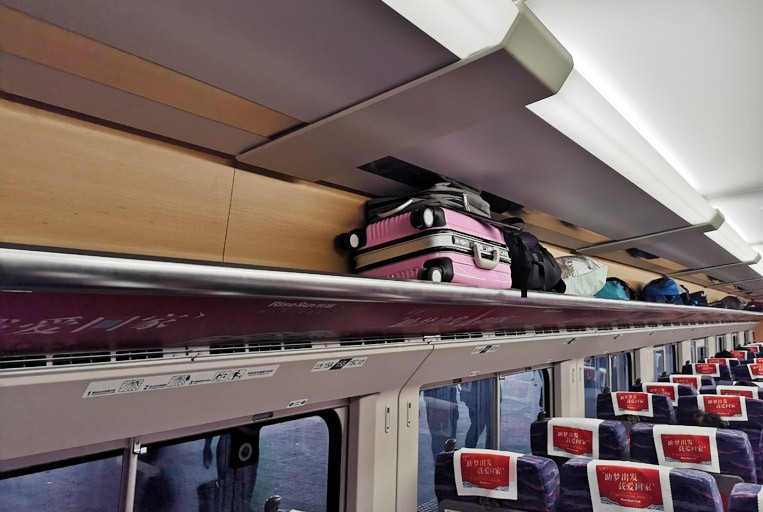
VI. Onboard Experience & Amenities
China’s HSR trains are modern, clean, and designed for passenger comfort.
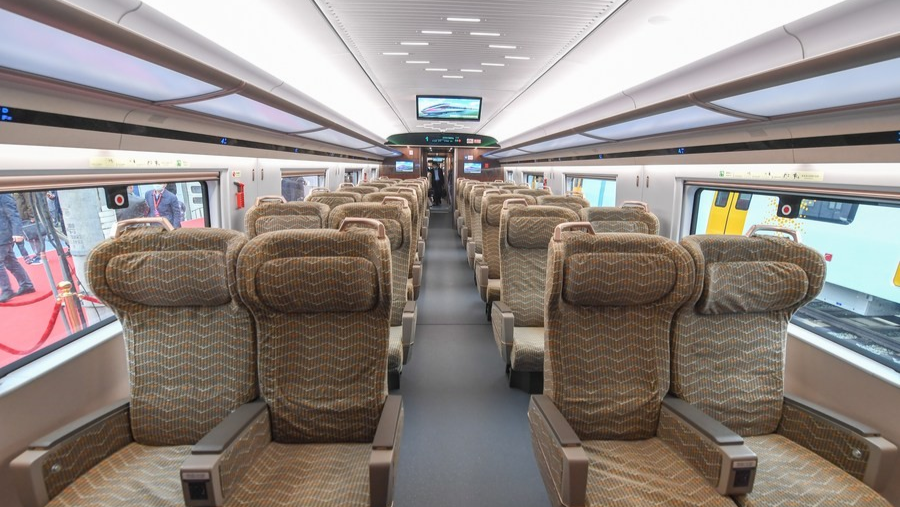
Seats & Comfort
- All seats recline with tray tables
- Footrests in First and Business Class
- Large windows with adjustable sunshades
- Power outlets available (Chinese standard)
Food & Drink
- Snack Trolley (零食车): Selling packaged snacks and drinks
- Buffet Car (餐车): Hot meals and more options
- Bringing Your Own: Very common and acceptable
- Free Hot Water: Available at carriage ends for tea/coffee/noodles
Other Amenities
- Toilets (卫生间): Both Western and squat styles, usually clean
- Wi-Fi (无线网络): Available on many trains (may require Chinese phone number)
- Announcements: In Mandarin and English on major routes
- Train Staff (列车员): Helpful but English proficiency varies
- Scenery: Diverse Chinese landscapes passing by

VII. Arriving at Your Destination
Preparing to Alight
- Listen for arrival announcements
- Gather your belongings in advance
- Check all storage areas for items
Exiting the Station
- Follow “Exit” (出) signs
- May need to scan ticket/passport at exit gates
- Find local transport connections (metro, taxis, buses)

VIII. Important Tips & Etiquette
Essential Tips for Riding HSR
- ALWAYS Carry Your Original Passport: Required at every step
- Book Tickets Well in Advance: Especially for popular routes and holidays
- Arrive Early: Stations are large and can be crowded
- Have Destination Info in Chinese: For tickets, taxis, and directions
- Download a Translation App: Helpful for communication
Onboard Etiquette
- Queue Politely: Boarding can be crowded
- Manage Noise Levels: Keep conversations at reasonable volume
- Food Etiquette: Avoid strong-smelling foods
- Toilet Use: Keep clean and dispose of paper properly
- Secure Belongings: Keep valuables with you
- If You Miss Your Train: Go to ticket change window immediately
IX. Conclusion
Riding China’s High-Speed Rail is an integral part of the modern China travel experience. It’s a testament to the country’s rapid development and offers an incredibly efficient, comfortable, and often scenic way to explore its vast landscapes and vibrant cities.

With a bit of planning using this guide, you’ll be well-prepared to navigate the system with ease and enjoy the journey. So, book your ticket, sit back, relax, and watch China unfold before your eyes from the window of a bullet train!
Published: May 9, 2025
Enjoyed this article? Consider buying me a coffee to support more content like this!
💖 0 people have clicked to support this article.


